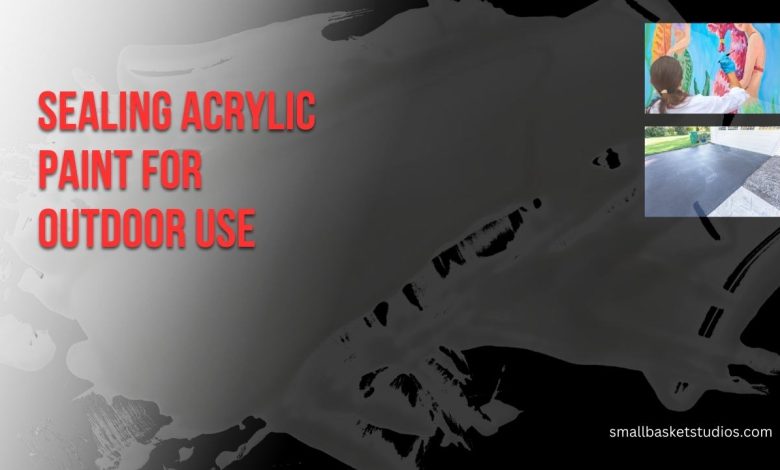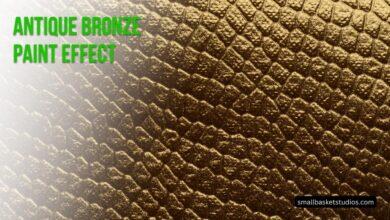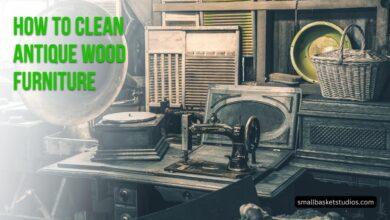Sealing Acrylic Paint for Outdoor Use: A Professional Guide

Vibrant acrylic paintings add a pop of color and creativity to any outdoor space. However, without protection from the elements, exposure to sun, wind and rain can quickly cause acrylic paint to crack, fade and peel. Sealing your artwork is crucial for longevity, especially in exterior conditions.
In this guide, learn professional techniques for effectively sealing acrylic paintings, murals and more against weathering and wear. We’ll cover selecting the right sealer, proper application procedures and tips for achieving a long-lasting protective barrier. With the right products and practices, you can confidently display your acrylic artworks in gardens, on building facades or anywhere out in the open while keeping colors locked in and structural damage securely sealed out.
Choosing a Sealer Based on Display Location
Not all sealers are equally effective for outdoor acrylic paintings. The best choice depends on specifics like:
- Level of sun exposure
- Frequency of moisture or rain
- Surface material (e.g. wood, concrete, metal)
Here are common sealers for various exterior display scenarios:
High Sun Exposure
- Solvent-based acrylic polymer varnish
- 2-part epoxy resin
High Moisture Exposure
- Marine varnish
- Spar urethane
Painted Wood Surfaces
- Exterior oil-based polyurethane
- Spar varnish
Painted Metal & Concrete
- Clear enamel or epoxy spray paint
- Industrial anti-graffiti coatings
Proper application techniques also play a key role in sealer effectiveness. But first, let’s explore general best practices for applying sealers to acrylic paintings headed outdoors.
Application Tips for Outdoor Acrylic Paint Sealers
Sealing outdoor acrylic art requires careful methods to ensure full, even coverage without compromising or disrupting underlying paint. Here are application tips:
- Let acrylic paint cure 2+ weeks before sealing
- Apply thin coats to prevent dripping, bubbling and brush strokes
- Lightly sand between coats with 220+ grit sandpaper
- Allow proper drying time between coats as specified by sealer
- Finish with 3+ thin coats for adequate protection
Additionally, outdoor sealers require higher sheen levels like gloss or semi-gloss to enable proper moisture runoff. Matte finishes absorb more water.
Now let’s look at techniques for applying specific sealers:
How to Apply Varnish, Urethane and Epoxy Sealers
- Use high quality varnish brush
- Apply in direction of wood grain over paint
- Maintain wet edge to prevent lap marks
- Catch drips by carefully tipping surface
- Sand lightly between coats with fine sandpaper
How to Apply Spray Sealers
- Cover surrounding areas from overspray
- Hold can 10-12” from surface
- Apply light, even strokes overlapping 50%
- Use fine sandpaper to smooth drips if needed
- Add multiple thin coats for sufficient coverage
By mastering proper application procedures for your chosen sealer, you can better shield outdoor acrylic paintings from rain, sun and other threats.
FAQs
Here are answers to some frequently asked questions:
How long will a sealed acrylic painting last outside?
With proper sealing application and routine maintenance, an acrylic painting can survive outdoors for 5-10 years depending on climate and exposure levels before needing resealing.
How do you maintain a sealed outdoor acrylic painting?
Check sealed paint surface annually for cracks or worn spots. Clean surface gently before reapplying 1-2 fresh sealer coats to touched up areas or overall if needed to renew protection.
Can you seal an acrylic pour painting outdoors?
Yes, the same sealing methods work well for preserving outdoor acrylic pour paintings. Floetrol in the pour paint mixture can repel some sealers though, so test compatibility on cured samples first.
What sheen is best for outdoor acrylic sealer?
Higher sheen sealers like gloss or semi-gloss work best by enabling maximum water runoff. Matte sealers absorb more moisture which can undermine paint integrity quicker.
Do all sealers work on every surface?
No. Sealers have varying compatibility and effectiveness on different surfaces like wood, concrete, metal, etc. Consult sealer specifications and test first before applying to your specific painting surface.
Shield Your Paintings from the Elements
Don’t let fears of fading and peeling stop you from showcasing your acrylic masterpieces outdoors. With our tips for properly selecting and applying protective sealers, you can defend your artwork against sun, wind, rain and anything else nature wants to throw its way! Find the right sealer and application method for your unique piece and display it proudly in gardens, on buildings or wherever it can add a punch of color to brighten someone’s day.




